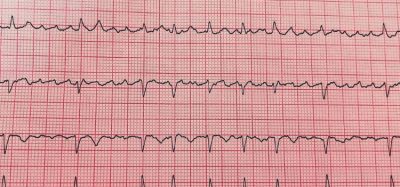Roche multiple sclerosis subcutaneous injection: late-breaking data
Posted: 11 October 2023 | Catherine Eckford (European Pharmaceutical Review) | No comments yet
OCREVUS subcutaneous injection was comparable to intravenous (IV) infusion in providing near-complete suppression of multiple sclerosis brain lesions over 24 weeks, Phase III study data shows.


Late-breaking data from Roche’s Phase III OCARINA II study have revealed that OCREVUS® (ocrelizumab) subcutaneous injection was comparable to IV infusion in providing near-complete suppression of MRI brain lesion activity over 24 weeks, for relapsing or primary progressive multiple sclerosis (RMS or PPMS) patients.
OCREVUS is a humanised monoclonal antibody designed to target CD20-positive B cells, which are thought to be a key contributor to myelin and axonal (nerve cell) damage, noted Roche. OCREVUS IV is the first and only therapy approved for both RMS and active, or relapsing secondary progressive MS [SPMS], as well as clinically isolated syndrome [CIS] in the US) and PPMS.
Evidence released in July 2023 showed that the treatment met its clinical endpoints in the Phase III study.
Data for Roche’s RMS/PPMS subcutaneous injection
The new late-breaking data from the Phase III OCARINA II study showed that OCREVUS subcutaneous injection provided rapid, sustained and near-complete B-cell depletion that was similar to OCREVUS IV infusion (97 percent and 98 percent of patients respectively had B cells levels of 5 cells/µL or less when first measured at 14 days). This was sustained over 24 weeks. Approximately half of the trial’s patients had reached 24 weeks of treatment at the time of analysis.
For both OCREVUS subcutaneous injection and OCREVUS IV infusion, most patients had no T1 gadolinium-enhancing (T1-Gd+) lesions, and no new/enlarging T2 lesions, at 24 weeks, the data found.
The safety profile of OCREVUS subcutaneous injection was consistent with the established safety profile of OCREVUS IV infusion. No new safety signals were detected for OCREVUS subcutaneous injection, according to Roche.
OCREVUS subcutaneous injection has the potential to expand the usage of OCREVUS in treatment centres [with IV capacity limitations]”
“We are pleased to share that OCREVUS 10-minute subcutaneous injection suppressed brain lesions as effectively as the intravenous infusion,” remarked Dr Levi Garraway, PhD, Roche’s Chief Medical Officer and Head of Global Product Development. “… we hope the twice-a-year dosing will offer the same high adherence and persistence.’’
OCREVUS twice-yearly, 10-minute subcutaneous injection has the potential to expand the usage of OCREVUS in treatment centres without IV infrastructure or those with IV capacity limitations, Roche highlighted.
The OCARINA II data will be presented at the 2023 European and Americas Committees for Treatment and Research in Multiple Sclerosis (ECTRIMS-ACTRIMS) and submitted to health authorities around the world in subsequent months, Roche stated.
Related topics
Biopharmaceuticals, Clinical Development, Clinical Trials, Drug Delivery Systems, Drug Development, Research & Development (R&D), Therapeutics









